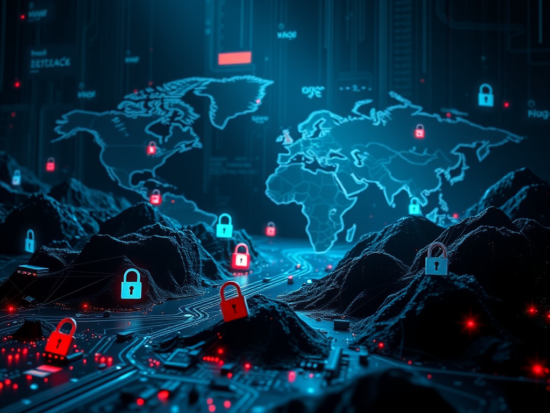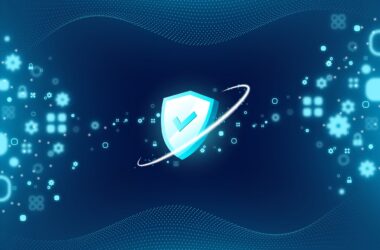The cybersecurity landscape is always changing. If you want to stay protected, then – as with most things – knowledge is power. Understanding the diverse nature of threats, how they work, and where they come from, will afford you the tools required to stay safe.
2019 saw a plethora of worrying developments. U.S. government contractors were breached, leaking the data of 100,000 people. Supply chain attacks hijacked trustworthy vendors and turned them into hacking tools. Plus, the explosion of ransomware (malware that will lock down your computer until you pay a fee) has only continued to grow.
While governments around the world have introduced legislation to try and protect online privacy and increase security, 2020 is poised to see more attacks to develop and take place. The following are all threats that are likely to rear their ugly heads over the coming months.
If you aren’t aware of the risks, now is the time to educate yourself.
Social Engineering Attacks
Phishing is not a new concept, but it’s one that continues to complexify as time goes on. The practice involves tricking unsuspecting victims into clicking an infected link or parting with sensitive information about themselves. The most common phishing attacks happen via email, but they’ve also branched out into text, phone calls, and even social media.
More recently, phishing attacks have replicated trusted
sources so victims will believe their legitimacy. They will contact you posing
to be your bank, tax collector, Apple or Amazon – to name just a few examples.
You see a trusted name and don’t think twice about responding.
The best way to avoid falling for this type of social engineering is to use
extreme caution when engaging with messages. If you receive an email, text, or
phone call that demands you part with personal data or open a website address,
follow these tips to confirm legitimacy.
- Check the contact information and ensure it
matches with the official details for that company. Most organizations have
their customer service information on their website, so it’s easy to confirm. - Contact the company’s official helpline to check
whether they’ve sent you any correspondence. - Never open links from people you don’t know
- If a friend/organization sends you a suspicious
link, double-check it was actually them before you click. - Be wary of any “official” messages
that claim that you need to respond urgently. This tactic is commonly used by
hackers to make people act without thinking.
Malware Attacks
Malware is a popular buzzword in cybersecurity – but what does it actually mean? Malware is a contraction of the phrase ‘malicious software.’ It refers to any program that can be downloaded onto your devices with an intent to cause harm.
Common types of malware include:
- Spyware. The
main aim is to spy on your activity, whether that’s recording your keystrokes,
online activity, or data within your saved files. - Adware.
If your computer is suddenly flooded with pop-up ads, then you likely have this
type of infection. - Virus.
Any malware that continues to spread itself and infect other people and devices
is known as a virus. - Rootkit.
This particularly nasty tool allows hackers to take remote control over your
device and use it for their own gain. - Trojan
Horse. Some malware is disguised as seemingly trustworthy pieces of
software. You won’t know you’ve downloaded an infection until its too
late. - Ransomware.
As mentioned previously, ransomware will lock down your computer and ask you to
pay a fee to re-establish control.
Malware is by no means a new threat. It’s existed almost as long as computers themselves. Unfortunately, it shows no sign of disappearing anywhere soon. The best way to avoid malware is to take the necessary steps to protect your computer and mobile devices.
Internet of Things (IoT) Vulnerabilities
Our entire world is digitalizing. From smartphones to smart homes, more of our lives rely on the internet than ever before. Unfortunately, while these devices offer convenience, they often lack security. We’ve already seen reports of Chromecasts being hijacked. Plus, concerns about seemingly innocuous objects – like smart light bulbs – acting as an entry point for hackers, are already circulating.
It’s easy to overlook these smaller devices, as we don’t consider them to be computers. However, any object with internet access is a potential threat. Consider a world in which burglaries occur because thieves have found a way to override your smart lock. One where your identity is stolen through the information you’ve given to your Amazon Echo.
While these threats are still in their infancy, it’s wise to keep an eye on their development throughout the coming years. Once cybercriminals find a way to grant backdoor access through IoT devices, we can expect a flood of hacks of this nature.
Insecure Networks
Public WiFi is an undeniable blessing. It means we can check our emails on the train, or share our new Instagram selfie with ease. Unfortunately, it also comes with its fair share of risks. Most people don’t realize that public networks are unsecured, so data can be shared between users.
The result of this is criminals who lurk on public networks to steal your information. They can directly intercept your bank details if you make a payment while out-and-about, or gather other data to commit identity theft.
Fortunately, this threat is easy to overcome. Virtual Private Networks (VPN) are handy apps that encrypt your data when you use public WiFi. The VPN industry is already worth an impressive $23.60 billion, and sources suggest this figure will rise to $27.10 billion in 2020.
If you aren’t using a VPN when out-and-about, we recommended that you stick to your mobile data when accessing the internet.
Cyberwarfare
While it may sound like a plotline from a science-fiction movie, cyberwarfare is becoming an increasingly realistic threat.
The WannaCry ransomware attack that brought the British health service to a standstill – alongside many corporations worldwide – was reportedly a product of the North Korean government. Similarly, the 2016 U.S. presidential election was suggested to have suffered interference from the Russian government, to harm Hilary Clinton’s campaign.
While no formal charges were ever brought against either country, these attacks act as a harrowing example of the future of warfare. As countries across the world rely on their digital infrastructure more and more, any disruption to these systems could cause severe damage.
As individuals, there’s not much we can do to protect ourselves for cyberwarfare. However, staying informed about the growing threat can help us take action quickly if such a situation were to arise.
Stay Educated to Stay Protected
Cybersecurity can seem an overwhelming concept to many. It can be easy to ignore it altogether and ‘hope for the best.’ Unfortunately, naivety towards the potential threats can put you in more danger. The above risks are some of the most prevalent that we can expect to see over the coming years. To stay safe, take some time to research further how you can protect yourself and your family. It may seem like a long and arduous task, but it’s infinitely easier than having to recover from an attack if you fall victim.







